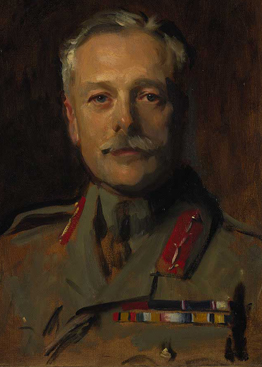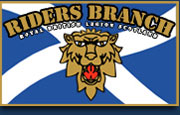Fighting for every veteran
A pressure group that became a social organisation and is as relevant today as ever
EVERY single British Legion Branch around the world, from Tomintoul to Tokyo, can trace its genesis back to Edinburgh’s St Cuthbert’s Church, Lothian Road, when several warring groups united under the leadership of Douglas Haig to form a single organisation for ex-Servicemen and women. The date was 18 June 1921. Things were becoming violent. There had been pitched battles between the various factions on Westminster Bridge and Parliament Square. The Government needed to hear a single voice. Unity had become essential.
|
Haig was British commander on the Western Front for most of World War One. The huge casualties that his military strategy produced has made him a controversial figure. Douglas Haig was born in Edinburgh on 19 June 1861 into a wealthy family who owned a whisky business. He studied at Oxford University and in 1884 went to the Royal Military Academy at Sandhurst. He then served as a cavalry officer for nine years, mainly in India. He later took part in the Sudan campaign (1897 - 1898) and the Boer War (1899 - 1902). In 1906, Haig went to the War Office as director of military training. His responsibilities included the organisation of a British Expeditionary Force (BEF) for deployment in the event of war with Germany. On the outbreak of war in 1914, Haig was commanding the BEF's 1st Army Corps, whose overall commander was Sir John French. By the end of 1915, it was clear that French was ill-suited to the role, and in December Haig was appointed commander in chief in his place. |
In August, two months later, the same group under Earl Haig, inexplicably, founded another British Legion in London and the outrage this created north of the Border led to the first re-naming itself the British Legion (Scotland). The Legion’s birth was nearly as acrimonious as its gestation. The two organisations have never amalgamated but today work as close allies. In 1950 the brackets were removed from the title and in 1971, its 50th birthday, it was granted “Royal” status. Ninety years later the Royal British Legion Scotland has nearly 200 branches and 35,000 members while its London-based sister, the Royal British Legion (TRBL), has 380,000 members in 2,800 branches across the globe.
Unlike the TRBL, the Royal British Legion Scotland (RBLS) is not a grant making body but has always served both its community and furthered the ex-Service cause. It is a grand claim but the RBLS has improved the lot of the individual, the community and, ultimately, the country. It is seen as a unique force for good whose longevity is no accident.
Though the Legion’s birth was fiery, born from war and grievance, social clubs were soon established though the main activity remained the giving of individual advice and campaigning on behalf of the ex-Service community. In the years to 1937, one-and-a half million claims cases were handled by the RBLS (though most were not Legionnaires). That is to say, nearly every family in Scotland received the Legion’s help and it quickly established itself as the main voice for the ex-Service population. Pensions advice and tribunal representation continue today and remain free to all ex-Service people and their families whether Legionnaires or not.
In recent years the Legion has campaigned successfully on a wide range of issues, including the removal of income tax on war widows’ pensions, pardons for those executed in World War I and compensation for Japanese Prisoners of War. That British Servicemen and women have been involved in conflicts in every year since 1945 has meant the demands upon ex-Service charities have remained very high. And if there is ever a group likely to support them – or send comfort parcels to the troops – it is the RBLS. Fundraising remains an important part of Legion life, be it for Erskine or the Ghurkhas, and the Legion’s collection for the Scottish Poppy Appeal remains the charity’s single biggest contribution.
Though famous for public events, the RBLS’s heart is in the local community where members gather to socialise, for barbeques, dances or coach trips. It is here that the Legion works its subtlest but most powerful, uniting the community and extending comradeship. If the attributes seem old-fashioned, they are not; they are timeless.
The classic image of Legionnaires with their unmistakable blue and yellow standards is a regular sight at countless acts of remembrance. No national or local wreath-laying ceremony would be complete without Legion representation. This is not just in November at the Capital but at small war memorials near you on Holocaust Day, Armed Forces Day or on military anniversaries.
It is not possible for a successful organisation to flourish by standing still and the Legion is no exception. Membership is mostly social, with regular entertainments, normally involving dancing and music accompanied by good food, drink and laughter. Members can enjoy national golf, shooting, fishing or domino competitions or join the newly created biker branch, the Riders with over 700 members. It is thought that the Legion’s pipe bands have done more than any other to develop piping among young Scots while the beating retreat of the RBLS massed pipes and drums at Edinburgh Castle’s Esplanade remains one of the country’s great sights and sounds. Though the qualities that established the Legion still remain (service to the community, charity, commemoration and the duty to remind the public as to the debt of honour to the Fallen), the organisation has never been frightened of change.
The Legion reminds us that we are not alone; we have responsibilities and they can be met more easily if we do it together. And it can be fun that way too.
The Riders Branch formed on St Andrew’s Day 2010 and has quickly risen to over 700 members. They are active most weekends and since conception raised over £45k for Scottish Veteran Charities. They have attended many funerals on request forming a “farewell guard of honour” at the entrance to the Service. Like any Branch the Riders endeavour to support local and national events and have been active on Armed Forces Day parades in Edinburgh, Aberdeen, Stranraer, Inverness and Stirling. 2019 is the year of “foundation” for the branch whereby we endeavour to build friendships, develop new opportunities and expand our family. To enable us to meet these challenges the Branch intends to be once again the lead Branch of the RBLS, collectively promoting “Voices For Veterans” Over 150K raised for services charities.



